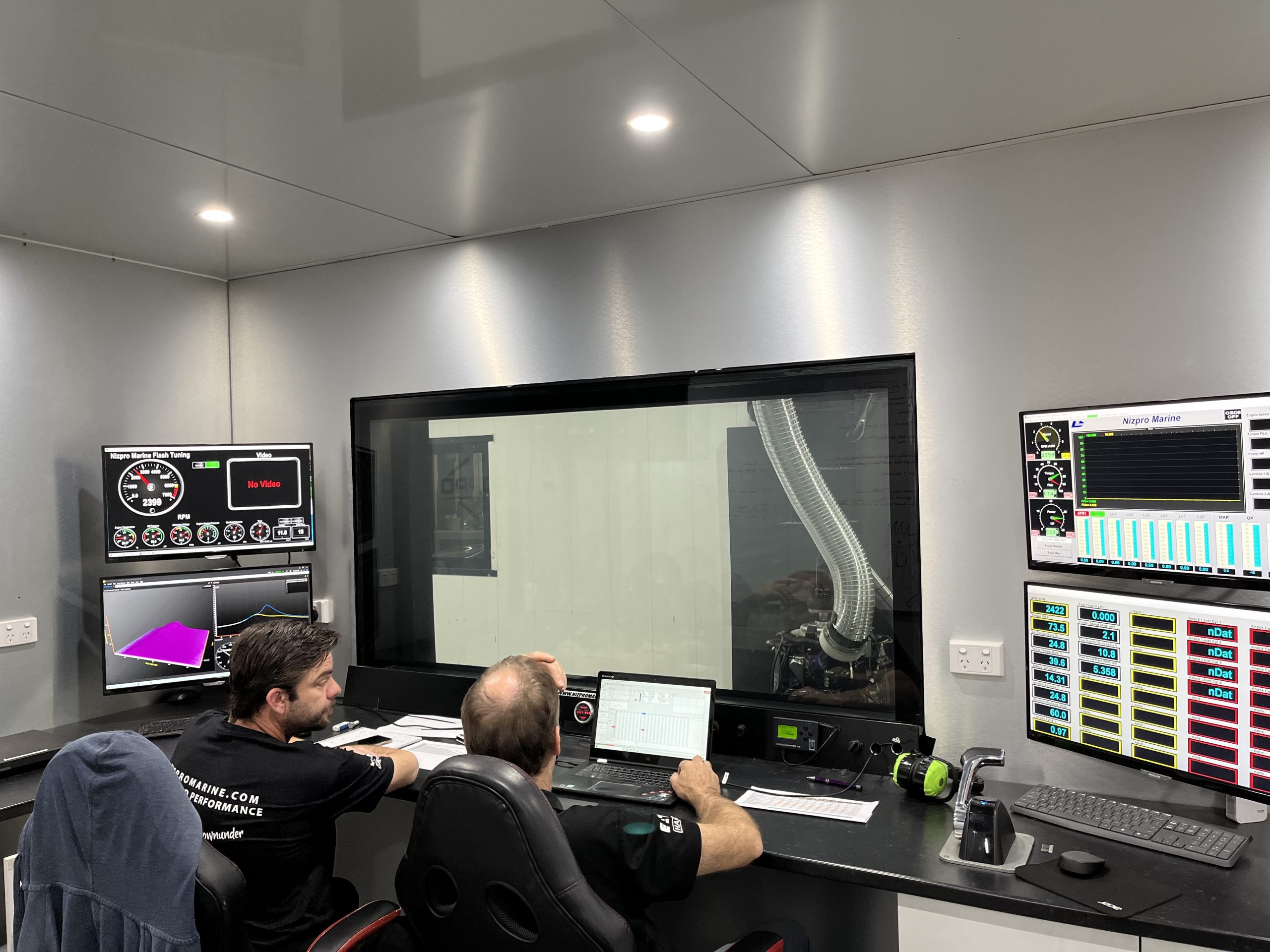NIZPRO TECH POST 1
At Nizpro we are often asked about the power numbers we see from standard Yamaha engines, and how we accurately measure their output, and the numbers of our own tuned engines.
So, I thought I would jump on today and give you all a no BS explanation of how we measure horsepower, and the level of accuracy we go to, to make sure our power numbers, both stock and tuned, are accurate.
Recently we began testing a brand new VF115 SHO, which produced 139hp in standard form. Surprising right!
Firstly, let me say from a marketing point of view, we have nothing to gain by reporting inflated stock Yamaha power numbers, as it simply lowers the overall gains we can claim once we release our Nizpro tuned numbers.
It would be far better for us, to say, “Tune your VF115 to 150hp – a 35hp or 30% gain”.
Way better than ‘Tune your 139hp to 152hp – an 11hp or 8% gain!
While using the VF115 as an example – another point worth noting is that the VF115 SHO engine is mechanically identical to the Yamaha F130 Offshore engine.
There are a few small differences within each calibration, which changes where peak torque and power are produced by a hundred rpm or so, which differentiate the 2 different engines models.
Given this, it is no surprise that the VF115 SHO and F130 Offshore are so close in performance.
Given this it comes as no surprise that Yamaha do not offer a VF130 SHO, as there is little room to offer a significant power increase given Yamahas tuning strategies, to justify a SHO -Super High Output sticker.
So back to the numbers.
Our marine dyno test facility is, dare we say, the best independent outboard marine dyno on the planet. We use the newest and most comprehensive hardware and data acquisition systems available on the market, and we employ the best, degree qualified mechanical engineers we can.
Our dyno is regularly, independently calibrated – we have a 3rd party come in and test our equipment to see the numbers reported are the truth. This is required for our ongoing emissions testing program.
Our in-cylinder pressure combustion equipment can measure cylinder pressure up to 5.5 times for every crankshaft degree at 6000 rpm. This adds an extra system to accurately verify overall power against the calibrated load cell on the dyno retarder, but better still, it even calculates power output on each individual cylinder in real time.
The advantages of this when tuning is mine blowing, but that’s a whole other tech talk!
Our dyno measures power directly from the flywheel, however the lower unit is still fitted to the engine and rotating in gear, during all our testing.
This means that all parasitic losses are still in play and not being measured by the dyno, also the exhaust backpressure remains the same, as if the engine was on your boat.
Real world conditions and numbers, without wind, tides wakes etc.
It’s also worth mentioning we adhere to SAE J607 Standard of automotive engineers’ correction, so we collect repeatable numbers from day to day allowing for weather correction.
This is standard practice with OEM manufacturers.
For example, a few days ago the correction factor was – 0.7%, so the correction factor was removing hp numbers from the dyno reading!
I hope the above gives you a little insight into the levels we go to provide the absolute most accurate and detailed information as to the power numbers of both standard and Nizpro tuning power and torque numbers.
Make sure to check out all the “real VF115” numbers over at ww.nizpromarine.com under OUTBOARD ECU FLASH’s.
Make sure to ask your tuning company how they get their numbers!
Cheers, Simon


